Sometimes the best way to learn is from experience.
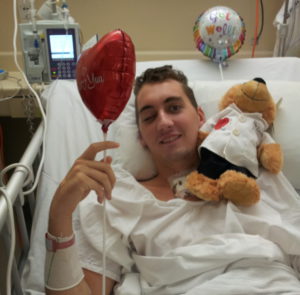
My name is Trent. I have epileptic seizures and have been in a coma.
Have you ever wondered what a seizure, or a coma, is like?
Walk in my shoes as I share these experiences with you through my very own eyes…
What was the first seizure like?
I was 16 years old, just a regular high-school kid that had only heard about epilepsy as ‘that seizure illness‘. None of my friends or family had epilepsy, and, as far as I was aware, I didn’t either.
So you can imagine the surprise I got when I found myself waking up on the floor of McDonald’s with two ambulance officers kneeling above me. “It’s okay, Trent”, they said, “You’ve just had a seizure.”
My head was spinning and confused, and I found their words were an incomprehensible blur. The muscles in my body ached, and all I could taste was blood from my sore tongue. There was a warm wet sensation between my thighs too. I had urinated. Great.
I lay there on the ground with dozens of curious eyes on me while I started coming back into reality. The last thing I could remember was ordering a Big Mac meal, so why the heck am I now laying on the floor of Maccas like a starfish??
The paramedics helped me onto a stretcher and wheeled me off to the ambulance. I was still so confused, so exhausted… and had just wasted 15 bucks on food I didn’t even get to eat.
What does the doc say?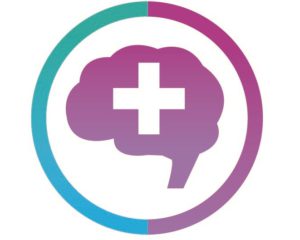
Having a seizure doesn’t mean you necessarily have epilepsy – you need to have two or more. As I was a fairly young guy with no family history of epilepsy, I figured I would just be part of the group that would only have one seizure in their lifetime.
The neurologist said something along the lines of “look after yourself”. Avoid alcohol and sleep deprivation was a recommendation – but for a guy in his late teens this was always going to be a struggle.
Sure enough, I had another seizure in the following months and was diagnosed with generalized epilepsy. Half a dozen more seizures and two years passed until I finally found the right medication balance. Each time it was one of those big shaky seizures you see on TV, medically named a Tonic-Clonic seizure.
Let me take you into the exact moment I have my Tonic-Clonic seizure…
What does a Tonic-Clonic seizure look like?
Due to the fact you’re out with the fairies, you have no idea what’s happening. If you were a witness to one of my ordeals, this is what you’d see:

- I drop to the ground (exactly like a sack of potatoes).
- My entire body tenses, squeezing every muscle to an explosive point.
- You hear me struggle to breathe as if I’m choking.
- My face goes purple and you hear grunting.
- Suddenly I’m flopping around like a fish and jerking vigorously.
- When the jerking finally ceases I go back to my usual collapsed state, and slowly start to regain consciousness.
If you witnessed this ordeal, for me, it would have lasted anywhere between 30 seconds and a few minutes.
I used to think it was magical how the paramedics were already there talking to me when I woke up – as if they got there in a few minutes. In actual fact, it takes me around 20 minutes to fully regain consciousness and realize what’s going on.
Yeh, it’s traumatizing for me to have the seizure. But imagine being a witness… that would be a whole different type of trauma altogether. I recently asked my mate Harly who was there at Maccas for my first seizure what he felt. “Freaked out”, he said, “Everybody was freaked out”.
The freak accident
I was 19 years old, and 3 years had passed since my first seizure. I could legally drive again, just bought a car, and drove to a town to celebrate the Easter long weekend with my mates. Life was good.
On our first day there, Good Friday, we decided to head to the park and kick the soccer ball around. There were already goals set up, and wise old me decided it would be a great idea to do chin-ups on the crossbar. Little did I know the goal wasn’t bolted into the ground.
The entire thing fell and dragged me down with it, crushing my head and instantly putting me into a coma that I wasn’t supposed to wake from.
What does a coma feel like?
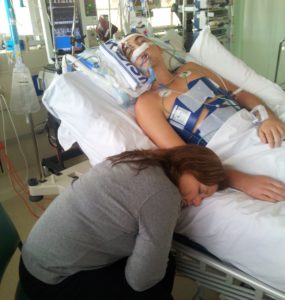
The coma I was in lasted two weeks, but it wasn’t like deep sleep for me.
No dreams. No sense of time. Just nothing.
When I came out of the coma, it wasn’t like waking up from a sleep. It was a confusing mess of thoughts and visions, and that’s when you start to get strange dreams as I struggled to stay awake long. It’s as if I’m awake for 5 seconds, barely coming to grips with what’s around me, then back asleep. This feels like days until I finally can stay awake for a decent amount of time.
The short times I was awake I felt weak and unable to move much. In my case, this was due to the fact my muscles had deteriorated in the two weeks where I didn’t move. I was 20kgs lighter than I was arriving at the hospital, and this led to having to learn to walk, talk and feed myself again.
My right eye also became crooked and blind, so walking with limited depth perception was a new adjustment I needed to make.
Another form of epilepsy
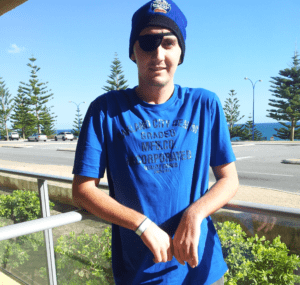
After several more weeks in the hospital, I was given day-leave with my mother and went to an apartment by the sea.
A friend came to visit me too, but as I sat on the balcony talking with her something strange started to happen.
I started talking gibberish. I couldn’t get the words out I wanted, and instead was slurring some strange chant. My eyes grew wide and stunned. Then nothing.
Waking up dazed and lying on the floor, I hear a soft voice…
“It’s okay, Trent.” It calmly said. “You’ve just had a seizure.” There were two paramedics kneeling there, and I started to sob as I knew what this meant.
Later I was to find out this was a different seizure with a different aura. This is when the second form of epilepsy, called Focal epilepsy, was diagnosed.
Purple Day
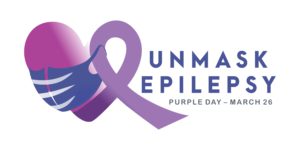
Before I talk about my life now, I want to tell you about something much more important. Purple Day (March 26), the global singular date for epilepsy awareness.
Being the most common chronic brain disorder in the world, epilepsy affects an estimated 65 million people across the globe – yet all of our experiences are unique. Some people grow out of their disorder, others have it for life. You could have one type of seizure, or you could have up to 40 types of seizures. Some epilepsy sufferers become controlled by medication, others never become controlled. Worst of all, seizures can kill.
This is why Purple Day is such an important date for us living with epilepsy. It’s a chance to make the world aware of how life-changing epilepsy is and why there is such a desperate need for a cure. Purple Day was founded in 2008 by a nine-year-old Candian girl, Cassidy Megan. She started Purple Day to get the world talking about epilepsy using the internationally recognized colour for epilepsy, lavender.
It is vital we have this conversation to educate people. I am eager to dispel some classic myth’s right now, most of which I once thought true:
- You can’t choke on your tongue
- There is no cure – yet
- Epilepsy isn’t contagious
- You can have epilepsy at any age
- Flashing lights aren’t always a trigger (I’m fine with lights)
- Never force something into the mouth of someone having a seizure
- Not all seizures look the same
Just like standard first-aid training, there is a basic seizure first-aid process you can learn in just a few minutes. First-aid instructions and videos in multiple languages can be found on Epilepsy Action Australia’s website here.
Life now
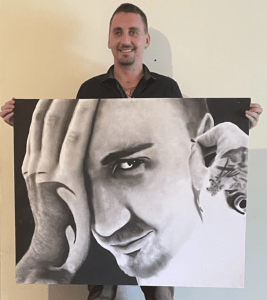
I tell my story to press on people how significant the impact epilepsy has on lives. This is just one version, there are 65 million others out there.
Nearly 10 years have past and I have the most incredible, fulfilling life. I have the most supportive network of friends and family, my dream marketing career, and I’m an award-winning half-blind portrait artist. I’ve achieved things well beyond what I could have imagined possible.
I have been seizure-free for almost 3 years now, but in the same breath, I need to reiterate some people with epilepsy never do become seizure-free.
We need to bring awareness about epilepsy and also desperately need a cure which can be achieved through donating to epilepsy research. Personally, I have been an advocate and volunteer fundraiser for Epilepsy Action Australia. Your donation no matter how big or small will help Epilepsy Action Australia work towards increased care and support of people with epilepsy and their families. Scan the code below to donate or visit www.epilepsy.org.au.
Not too long ago, I joined the Uccello Designs team and love to know that I am helping to make life easier for so many. With daily living products like the Uccello Kettle. The Uccello Designs team specialise in designing and selling stylish products to help those with limited strength, mobility, visibility and dexterity.
Writing this blog was challenging at times, with the memories and emotions and all, but I feel joy in sharing this with people like yourself that may continue this conversation. PLEASE share this article by clicking on one of the social media links below and join me. A comment section is also available and I encourage you to share your own stories.
Thank you.








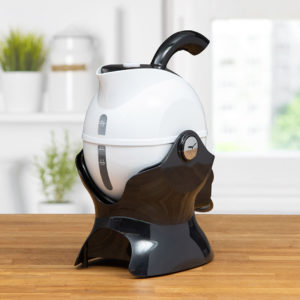
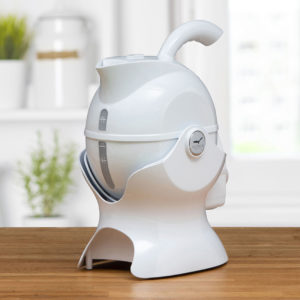
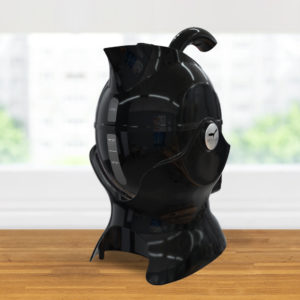


Leave a Comment